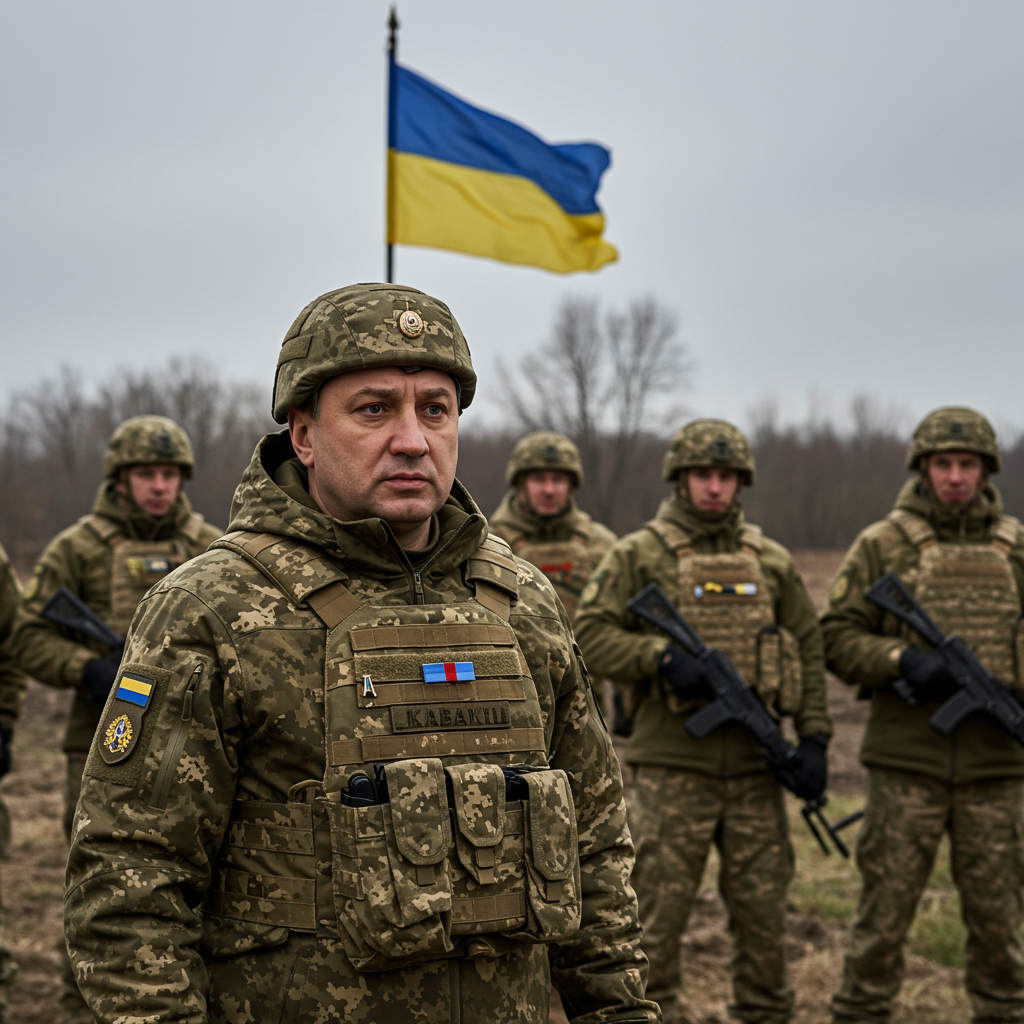Ukraine Stabilizes Sumy Frontline, Curbs Russian Advance
Ukrainian forces have successfully halted recent Russian advances in the northeastern border region of Sumy, according to the Commander-in-Chief of Ukraine’s Armed Forces, Colonel General Oleksandr Syrskyi. During a visit to the front lines this week, Syrskyi stated that the combat line in the area has been “stabilized,” asserting that the latest wave of Russia’s summer offensive from its own territory has been “choked off” or is “fizzling out,” drawing parallels to the unsuccessful breakthrough attempt in the Kharkiv region in 2024.
This assessment aligns with recent statements from Ukrainian officials indicating a decline in direct Russian pressure on the Sumy region, although border guard spokespersons have cautioned that the situation remains “volatile.”
Strategic Impact: Tying Down Russian Forces
A key claim highlighted by General Syrskyi is the strategic impact of Ukraine’s defensive efforts in the Sumy and neighboring border sectors. He stated that Ukrainian operations have managed to effectively “pin down” approximately 50,000 Russian Armed Forces personnel in the Pivnichnoslobozhanskyi and Kursk directions.
These reportedly include “elite airborne and marine brigades” that Moscow might otherwise deploy to more active fronts elsewhere in Ukraine. Syrskyi attributed this success, in part, to Ukrainian cross-border operations, particularly within Russia’s Glushkovsky district in the Kursk region. These actions, he suggested, have compelled Moscow to redeploy forces defensively to protect its own territory, thereby diminishing its capacity for offensive actions in the Sumy direction. However, this specific claim regarding the precise number and impact on Russian troop deployment has not been independently verified.
To further bolster regional defenses, a special defense group has been established for the Sumy region, commanded by Brig. Gen. Oleh Apostol, with a focus on enhancing security and preparing communities.
The Critical Fortification Challenge
Despite the reported success in halting the immediate advance, a significant concern remains the state of defensive fortifications in the Sumy region. There has been widespread criticism regarding a perceived lack of adequate defensive lines and public concern over delays in construction.
General Syrskyi addressed these concerns, confirming that tasks such as building additional fortifications, establishing “kill zones,” and creating anti-drone corridors are underway to protect soldiers and ensure reliable logistics. However, he also acknowledged that these crucial improvements need to be implemented “better and more efficiently.”
Analysts and military observers, including those from the DeepState monitoring group and military journalist Yuriy Butusov, have echoed these criticisms. DeepState analysts highlighted that delays in erecting “much-needed fortifications” and the “low quality of some of the dugouts” could no longer be ignored. Butusov specifically warned that Russian troops might continue probing defenses in areas where lines are perceived as weak, potentially pushing towards dense forests approximately 15-20 kilometers from Sumy city.
Experts suggest that the optimal window for safely and quickly building these fortifications in Sumy was likely in the autumn of 2023, following the surprise Ukrainian incursion into Russia’s bordering Kursk region. At that time, Sumy remained relatively safe while Ukrainian troops were active across the border. Now, Russia is undoubtedly well aware of the sections of the front line that lack strong defensive structures, making construction more hazardous and urgent.
Continued Pressure and Broader Conflict Context
The Russian push into the Sumy area, which began with renewed effort earlier this year, followed President Vladimir Putin’s announced plan to create “security buffer zones” along Russia’s borders with Ukraine’s Kharkiv, Sumy, and Chernihiv regions. This plan was presented as additional support for Russian border areas after the previous year’s Ukrainian incursion into Kursk proved an embarrassment for Moscow. Ukrainian officials, including President Volodymyr Zelensky in late May, had warned of approximately 50,000 Russian troops concentrating near the border, potentially aiming for a 10km buffer zone. Putin later stated Russia did not have the goal of capturing Sumy itself but did not rule it out, claiming an 8-12km buffer zone had already been established.
Despite Ukrainian claims of stabilizing the Sumy front and even regaining ground in specific border villages like Andriivka, the situation remains volatile. Areas near Andriivka, Kindrativka, Oleksiivka, Kostyantynivka, and Yunakivka have seen intense fighting. Russian forces continue long-range strikes, with heavy shelling and missile attacks frequently hitting Sumy city, causing dozens of casualties, including a devastating ballistic missile strike in April that killed at least 34 people. Moscow has also claimed recent village captures elsewhere on the front, specifically in the eastern Donetsk region (Novoserhiivka and Shevchenko), presenting these as steps towards broader offensive goals.
The full-scale invasion is now in its fourth year, marked by ongoing fierce fighting across the roughly 1,000-kilometer front line and a rise in large-scale Russian drone attacks on Ukrainian cities, including record numbers targeting Kyiv. While prisoner exchanges continue, stemming from previous talks and including recent exchanges of injured soldiers, diplomatic efforts have yet to yield significant progress towards a ceasefire. International support remains crucial, with NATO allies pledging substantial aid, though nervousness persists in Kyiv regarding the consistency of support from certain key partners, such as the United States, amidst domestic political shifts.




